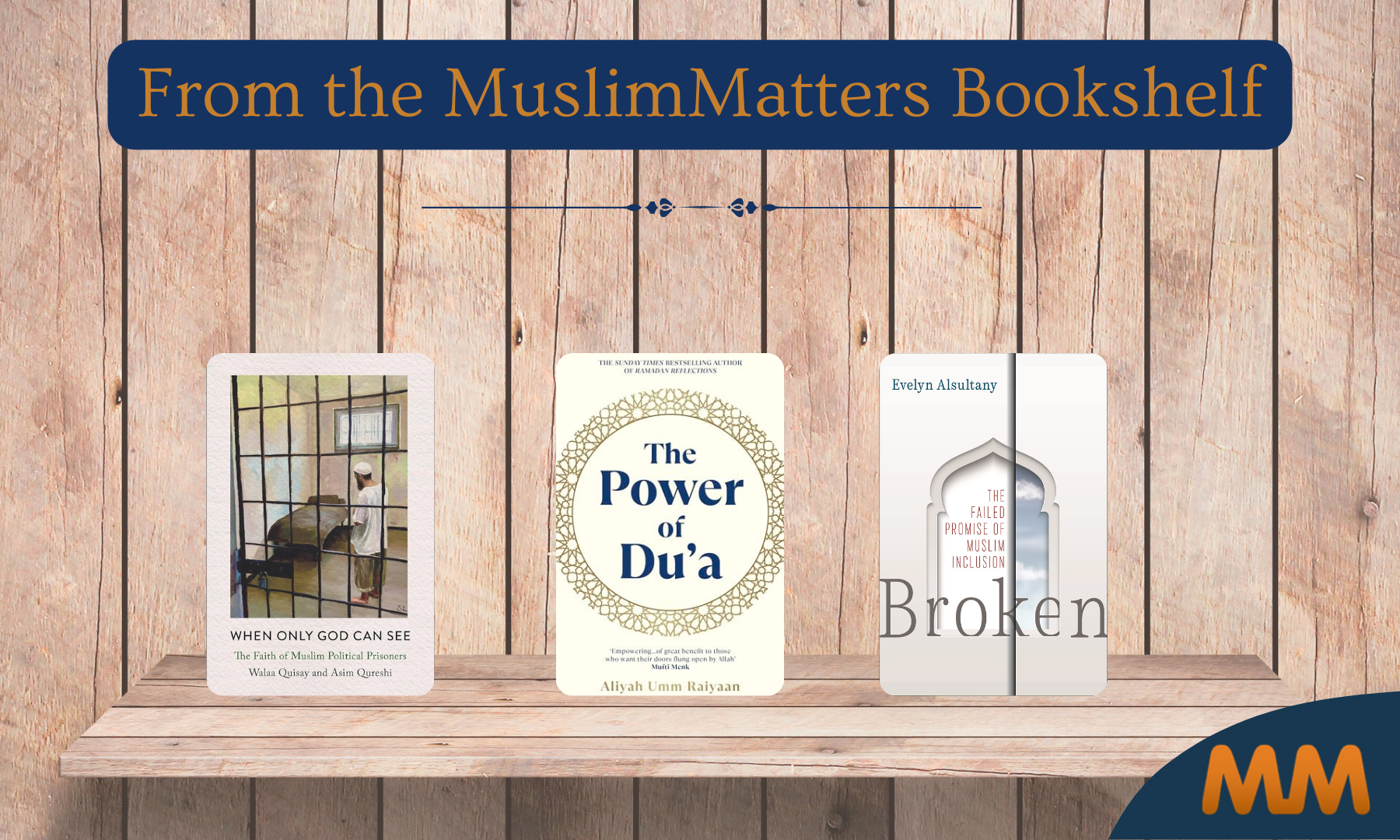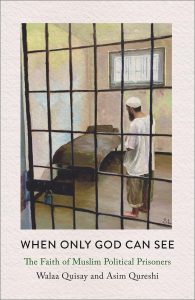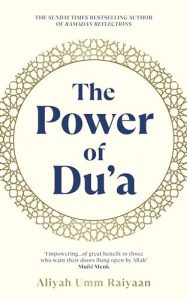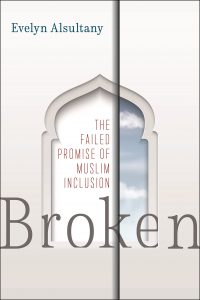#Culture
From The MuslimMatters Bookshelf: Prison, Prayer, And The Politics Of Diversity
Zainab bint Younus reviews “The Power of Du’a,” “When Only God Can See,” & “Broken: The Failed Promise of Muslim Inclusion.”
Published

From the MuslimMatters Bookshelf is a monthly column from MM staff members on their latest reads – the good, the bad, the intriguing, and the Islamic. In this edition, we focus on Prison, Prayer, And The Politics Of Diversity.
When Only God Can See – The Faith of Muslim Political Prisoners
by Walaa Quisay and Asim Qureshi
“When Only God Can See: The Faith of Muslim Political Prisoners” by Walaa Quisay and Asim Qureshi is a painful, powerful book that functions as bearing witness to the oft-untold stories of Muslim political prisoners held in the horrors of Guantanamo Bay, Egypt, and other “black sites” of illegal imprisonment and torture, and as an exploration of Islamic spirituality in the “University of Yusuf” 
Keep supporting MuslimMatters for the sake of Allah
Alhamdulillah, we're at over 850 supporters. Help us get to 900 supporters this month. All it takes is a small gift from a reader like you to keep us going, for just $2 / month.
The Prophet (SAW) has taught us the best of deeds are those that done consistently, even if they are small. Click here to support MuslimMatters with a monthly donation of $2 per month. Set it and collect blessings from Allah (swt) for the khayr you're supporting without thinking about it.
Th
Muslim political prisoners in Guantanamo, Egypt, and America (and elsewhere) are not your “average” prisoner – they are guilty of nothing but being victims of a global War on Islam, a geopolitical and Islamophobic campaign of terror and torture. Many of these prisoners were at the wrong place at the wrong time, literally sold into prison by greedy Pakistani military or Afghan warlords, or picked up as part of a regular practice of squashing political & religious dissent against vicious dictators.
This book highlights who these otherwise anonymous prisoners – male and female – really are: what they endure(d), how they endure(d), and how Islam became their ultimate form of resistance against an injustice that is not held accountable in this dunya but absolutely will be in the aakhirah. From their dedication to their salah (Moazzam Begg tells an anecdote about praying in jama’ah with other Muslim men who were bound and threatened by American soldiers on their first rendition flight to Bagram Prison) to prisoners teaching each other Qur’an through the bars of cages and whispering through pipes, the faith of these prisoners holds lessons for every single Muslim.
One could easily write hundreds of khutbahs about iman, sabr, developing a relationship with the Qur’an, personal crises of faith, resistance against oppression, understanding qada and qadr, and more – and we’d still have more to learn from what these prisoners go through. The theme of “the University of Prophet Yusuf” echoes throughout this book, reminding us that as Muslims, we have a spiritual tradition of believers being unjustly imprisoned and tortured… a tradition meant to teach the rest of us that freedom, not just imprisonment, is a test from Allah 
The stories of the men and women, boys and girls (teenagers as young as 13 and 15!), who endured and continue to endure the torments of both Eastern and Western nation-states do not exist in a vacuum. Qureshi and Quisay provide detailed context to the “War on Terror,” the history of Islamophobia fueling the violence against Muslim prisoners, and the complex ways that systems of incarceration are connected across the world. The book sheds light on the ways that the West and governments of Muslim countries are intimately allied, the systems of power and Islamophobia that span continents, and impact our everyday lives.
Indeed, perhaps one of the most important lessons of this book is that it is not just one kind of Muslim – male, overtly religious, and politically involved – who is at risk of being picked up by security apparatuses as part of the “War on Terror”… any Muslim, male or female, even those who aren’t “practicing” are at risk – it is you and I who could just as easily find ourselves behind bars, alongside the prisoners of this book.
Their stories are our stories. Will we make sure our voices are heard?
The Power of Du’a
Aliyah Umm Raiyaan strikes again with her latest book, “The Power of Du’a“! Just as with her first book, Ramadan Reflections, Aliyah brings classical Islamic knowledge and presents it to readers in a manner that is both easily digestible and relatable, and most importantly, practically applicable. (Perhaps a little too easily digestible at times – I found this book a little fluffier than Ramadan Reflections, and became impatient at being addressed as “Dear reader” constantly.)
Each chapter addresses an element of du’a – approaching Allah 

I underlined and tabbed numerous parts of this book that resonated with me deeply, and those which I knew I’d be returning to regularly in my (many) times of struggle and need. I don’t think I’ve ever tabbed a non-academic book this much! I did find the book repetitive at times, and I wished that many of the du’as from the Sunnah had been written out in Arabic as well.
Even so, I know that this book is incredibly valuable in making this topic accessible and applicable to so many readers who yearn to deepen their connection with Allah 
Broken: The Failed Promise of Muslim Inclusion
What does DEI (Diversity, Equity, and Inclusion) really mean? As universities and corporations fall over themselves to prove just how “inclusive” they really are, Evelyn Alsultany examines where and how Islam and Muslims fall into this framework of “diversity.”
Broken: The Failed Promise of Muslim Inclusion takes a critical look at what diversity has come to mean, particularly in the contexts of Hollywood entertainment, violent hate crimes against Muslims and Arabs, and Zionist targeting of pro-Palestinian students on college campuses.
Alsultany does an excellent job of pointing out the flaws of token “diversity” as a way of addressing (or rather, not really addressing) racism and prejudice, particularly against Muslims or those perceived to be so. She introduces the phrase “crisis diversity”: when a crisis produces a domino effect of responses, namely, the public remembering that a problem exists (e.g. Islamophobia), “experts” showing up to pontificate on the problem, and if we’re lucky, organizations issuing hollow statements and announcing “new initiatives” that vaguely acknowledge the problem.
Alsultany analyzes the ways in which Hollywood has moved forward, and backwards, in its representations of Arabs, Iranians, and Muslims in general. From adding more actors of colour to movie casts, to creating new tropes that don’t actually break stereotypes (e.g. “the patriotic Muslim” who gives their life for America, by fighting against the “bad Muslim terrorists”), Alsultany highlights that “inclusion” isn’t always actually good for us as a community.
Given that this book is an academic work, there is unfortunately no discussion on how “inclusion” in Hollywood is already a spiritually dubious endeavor for Muslims. However, readers should certainly take the time to reflect on the material that the author provides regarding the entertainment industry, and consider whether or not we really want to be included in it to begin with. Scratch the surface just a little, and I think we can all agree that there is almost no way to avoid exponential levels of haraamness in the industry!
Of more significance to the bigger picture are the chapters on racial gaslighting, racial purging, and “flexible diversity.” Racial gaslighting refers to when violence against Muslims, such as the Chapel Hill shooting, are acknowledged as violent crimes – but not acknowledged as hate crimes, and thus stripped of the context of Islamophobia. Alsultany also pushes readers to consider whether there is value in asking law enforcement and the justice system to acknowledge hate crimes to begin with, when these institutions are themselves Islamophobic and perpetuate Islamophobia at a widespread scale. She recognizes that this is a difficult question with no easy answers, and perhaps with no definitive answers at all – but it is a question worth thinking about, especially for those of us involved in grassroots activism and anti-Islamophobia advocacy.
In “Racial Purging,” Alsultany highlights the American phenomenon of “free speech” vs “hate speech,” the politicization of free speech as an excuse to perpetuate Islamophobia, and the way that corporations build their brands by either condemning or uplifting individuals involved in such public scandals. This chapter is particularly useful for understanding individualized vs institutional Islamophobia, and provides important framing for understanding these recurring incidents in the public eye (whether at the mainstream media level, social media, or both).
“Flexible Diversity” is perhaps the most relevant chapter of all: an examination of how “diversity” and “inclusion” are rendered meaningless in the context of the Palestinian cause on university campuses, and how Zionists seek to co-opt the language of DEI as they target pro-Palestinian activists. With a focus on the University of Michigan and notable incidents that took place on UM’s campus, Alsultany shows us how social justice becomes erased in the name of diversity.
“Replacing social justice with diversity changes the approach from rectifying the persistence of legacy of inequality and racial violence to ensuring that everyone is included as if everyone is equally marginalized” (p. 193, Elsultany, 2022). It is by weaponizing the language of inclusivity that Zionists can level accusations of anti-Semitism against those who advocate for the Palestinian cause. “When Zionisim intersects with DEO on college campuses, it perpetuates anti-Arab and anti-Muslim racism and undermines the inclusion of MENA and Muslim students” (Ibid). Alsultany reminds readers of the dangers of falling into DEI-speak, at the risk of losing sight of important principles of justice and anti-oppression.
“Broken” is a book that aptly reflects its title: showing us all that years of pursuing “inclusion” has done very little for the Muslim community, other than putting us in further positions of weakness. The book’s analysis shows us that whether in Hollywood or on campuses, pursuing diversity for diversity’s sake does nothing for our rights – instead, we must change our approach and expectations to a stronger foundation… one of fiercely fighting oppression, and tirelessly seeking meaningful justice instead.
Related:
From The MuslimMatters Bookshelf: Palestinian Literature For All Ages
Keep supporting MuslimMatters for the sake of Allah
Alhamdulillah, we're at over 850 supporters. Help us get to 900 supporters this month. All it takes is a small gift from a reader like you to keep us going, for just $2 / month.
The Prophet (SAW) has taught us the best of deeds are those that done consistently, even if they are small. Click here to support MuslimMatters with a monthly donation of $2 per month. Set it and collect blessings from Allah (swt) for the khayr you're supporting without thinking about it.
Zainab bint Younus (AnonyMouse) is a Canadian Muslim woman who writes on Muslim women's issues, gender related injustice in the Muslim community, and Muslim women in Islamic history. She holds a diploma in Islamic Studies from Arees University, a diploma in History of Female Scholarship from Cambridge Islamic College, and has spent the last fifteen years involved in grassroots da'wah. She was also an original founder of MuslimMatters.org.


AI And The Dajjal: Why We Need To Value Authentic Islamic Knowledge In An Age Of Convincing Deception

Moonshot [Part 32] – FINAL CHAPTER: A Man On A Mission

Op-Ed – When Islamophobes Try To Intimidate Us, They Underestimate Our Resolve: A Call to Stand With America’s Muslim Students

Who’s Afraid Of Dr. Naledi Pandor? – Zionist Panic and a Visa Revoked

Moonshot [Part 31] – Stranger By The Day

Op-Ed – When Islamophobes Try To Intimidate Us, They Underestimate Our Resolve: A Call to Stand With America’s Muslim Students

K-Pop Demon Hunters: Certainly Not for Kids

Op-Ed: What Muslims Will Really Be Talking About Over the Halal Turkey This Thanksgiving

November 29 Is The International Day Of Solidarity With The Palestinian People – What Will You Do?

Perimenopause For Husbands: What To Expect And How To Support Your Wife

[Dhul Hijjah Series] Calling Upon the Divine: The Art of Du’a (Part 1)

IOK Ramadan 2025: Four Steps | Sh Zaid Khan

IOK Ramadan 2025: Do Your Best | Sh Zaid Khan

IOK Ramadan 2025: Giving Preference to Others | Sh Zaid Khan

IOK Ramadan 2025: Which Group Are We In? | Sh Zaid Khan
Trending
-
#Society1 month ago
What Would Muhammad Do? – Silencing The Prophet: Liberal Islam’s Cowardice In Gaza
-
#Life1 week ago
Op-Ed – When Islamophobes Try To Intimidate Us, They Underestimate Our Resolve: A Call to Stand With America’s Muslim Students
-
#Current Affairs1 month ago
[Podcast] Welcome to the Islamic Republic of New Yorkistan!
-
#Life1 month ago
When The Powerful Eat Full And The Poor Go Hungry











Anya
August 21, 2024 at 4:04 AM
السلام عليكم ورحمة اللّٰه وبركاته
Dear Zainab,
I just purchased The Power of Du’a, but stopped at page 8, paragraph 2. I’m not sure if “thinking of this in human terms” is the right thing. Can that be considered as tashbih (antropomorphism)? I love your book reviews especially after your review on Secrets of Divine Love so I would like to know your opinion about this.
I want to continue reading The Power of Dua, but this makes me hesitate (the “dear readers” parts as well). If this is not appropriate to be approved as a comment, can you please reply me on my email? :)
بارك الله فيك
PS: I’m sorry English isn’t my first language
Zainab bint Younus
September 4, 2024 at 12:34 AM
Wa ‘alaikumus-salaam wa rahmatullaahi wa barakaatuh!
No, this is not considered Tashbih inshaAllah – it’s not comparing Allah to His creation, but rather scaling an analogy for us to understand more clearly.
Also, nothing wrong with the “dear readers” part, that’s just my own personal quibble!
Apologies for the late response!
Salaam,
Zainab